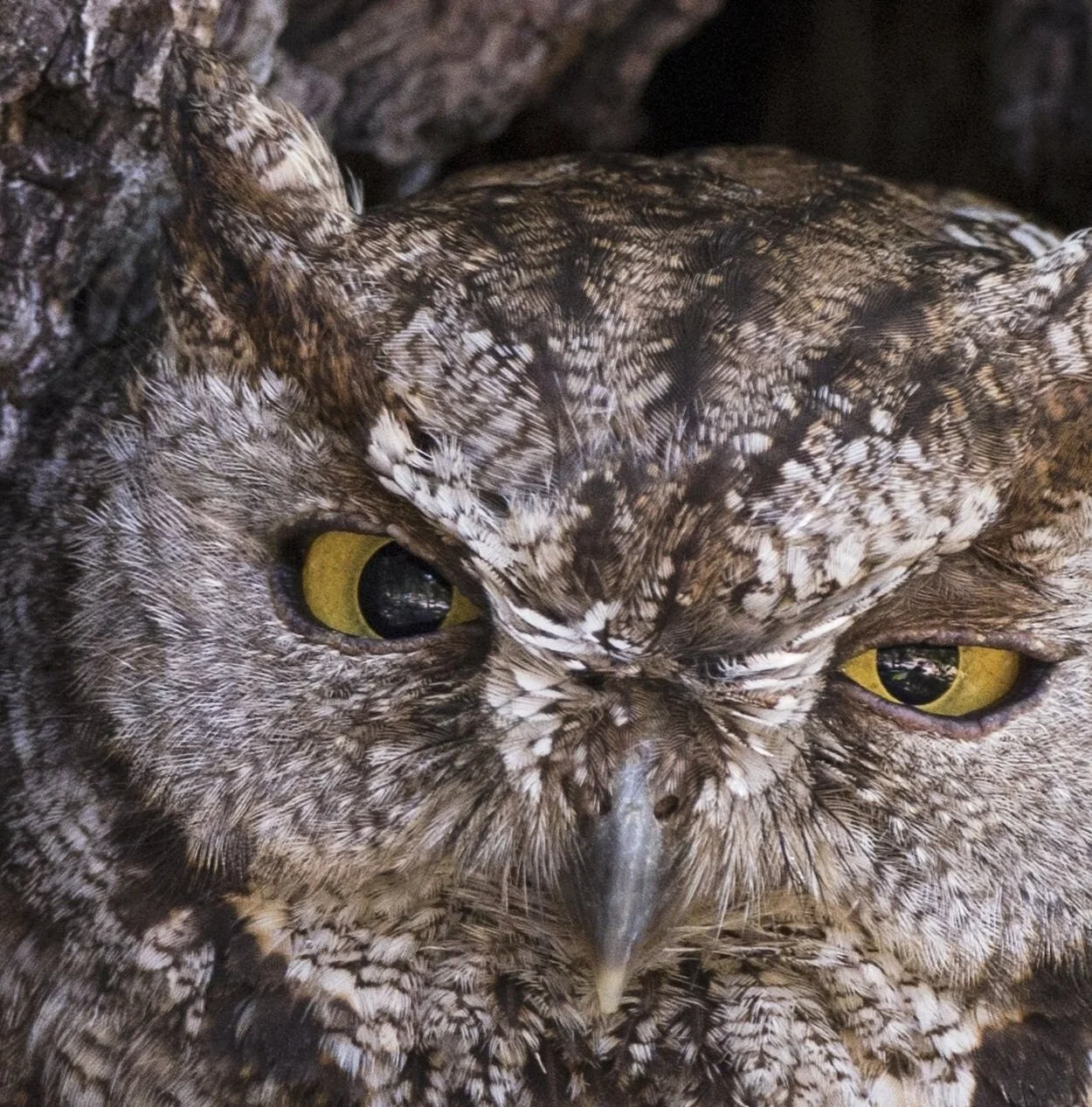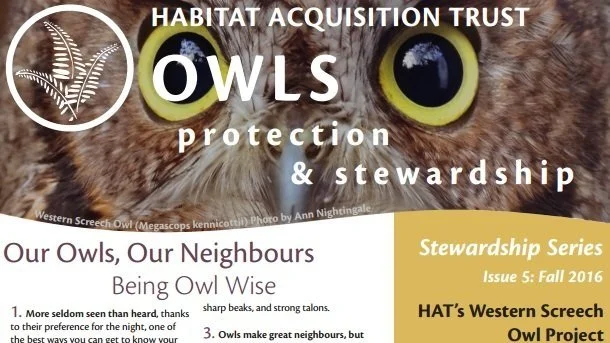
Western Screech Owl
(Megascops kennicottii ssp. kennicottii)
The Coastal Western Screech-Owl (Megascops kennicottii ssp. kennicottii) is a small owl that was formerly abundant throughout Greater Victoria. Due to habitat changes which led to the establishment and growth of a now significant Barred Owl (Strix varia) population, Western Screech-Owls in Greater Victoria have declined by over 90% in just the past ten years. They are currently listed as a Species of Special Concern under the federal Species at Risk Act, and the Committee on the Status of Endangered Wildlife in Canada (COSEWIC) has recommended moving their status to the more severe “Threatened”.
Did you know??
The Western Screech Owl doesn’t screech!
It has a "bouncing ball" song: a series of 5–9 short, whistled hoots, speeding up ping-pong-ball fashion toward the end.
Identification
The Western Screech-Owl is a small owl with yellow eyes, and “horns” or “ear-tufts” (please note these are not horns or ears – they are simply feathers that assist with camouflage) on its head. The call is a distinctive descending series of whistled “hoos”.
Where Do They Live in Victoria?
Today, Western Screech-Owls are restricted to a few older forests, mostly in the Highlands area of Victoria, and only a few pairs are known to be left. It is possible that there are other Screech Owls in the region that have not been detected. Surveying for these owls is part of HAT’s program. In the past, Western Screech-Owls may have been Victoria’s most common raptor. Up to a dozen pairs nested on the University of Victoria campus, and more in Mystic Vale. There were nests in Beacon Hill Park and in Garry Oak Meadows, and generally were wide-spread and abundant.
What’s the Problem?
Habitat changes in Victoria, which have reduced older forests and greatly expanded suburban and rural areas, have resulted in a new owl taking up residence in Victoria – the Barred Owl, which excels in this new ecosystem matrix. Unfortunately, there is considerable evidence that Barred Owls predate heavily on Western Screech-Owls. When Screech-Owl calls are played, Barred Owls quickly respond by flying in silently – in “stealth hunting mode”. Barred Owls are also known to predate heavily on bird nests, and may be predating on Screech Owl nestlings. The older, more complex forest where the few remaining Screech-Owls live probably offer some protection from Barred Owl predation.
Screech Owls have also suffered from loss of nesting habitat in wildlife (dead) trees.
Read More in Our Owl Stewardship Guide
What is HAT doing?
HAT is working to identify Screech-Owl nesting locations and will assess habitat in those areas for suitable nest sites. In particular, HAT will work to create nest boxes that are attractive to Screech-Owls and resistant to Barred Owl predation.
We are also working to permanently protect the older forest stands where the few remaining Western Screech-Owls still reside.
What can YOU do?
If you hear a Western Screech-Owl, let us know right away! Listen carefully, Western Screech-Owls are quiet, and can be confused with other, more common owls, including the Barred Owl.
If you have suitable habitat, consider putting up Barred Owl resistant nest boxes for Screech-Owls. HAT is working on some designs and will post them here when available.
Please retain dead trees on your land. Called wildlife trees by many biologists, dead trees are important habitat for many species of birds, including Screech-Owls. Often, a tall stump can be safely retained when removing a tree for safety reasons – talk to your arborist about it.
Call or email us to find out about seasonal volunteer opportunities to survey for Western Screech-Owls.









